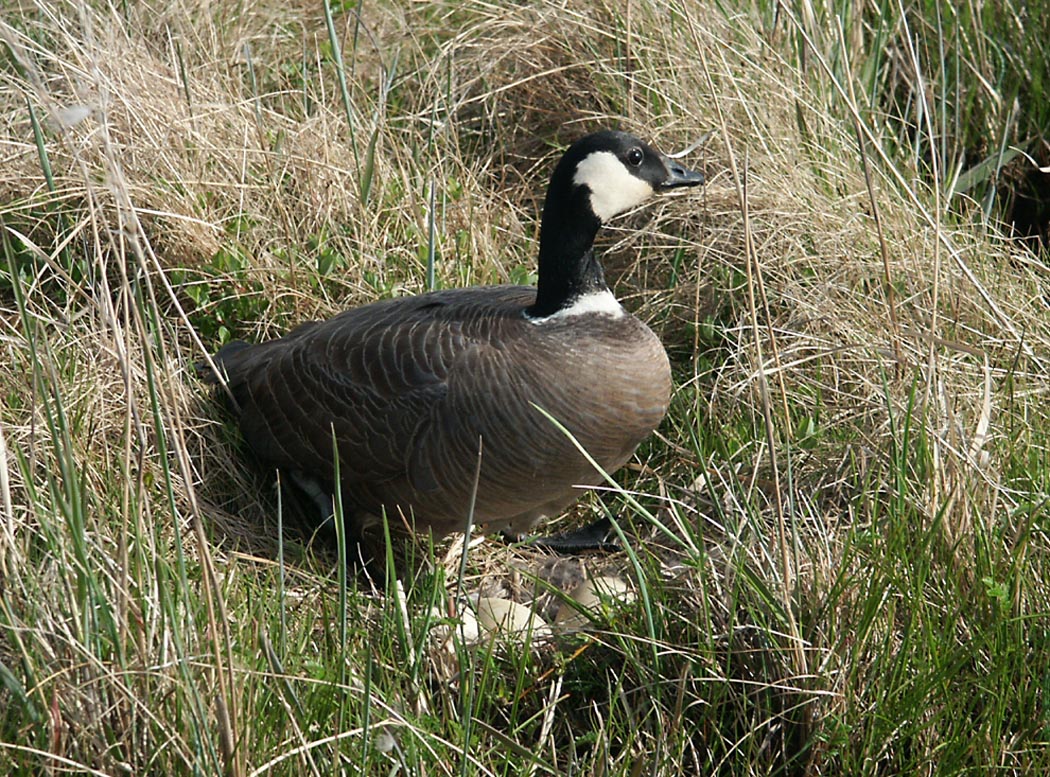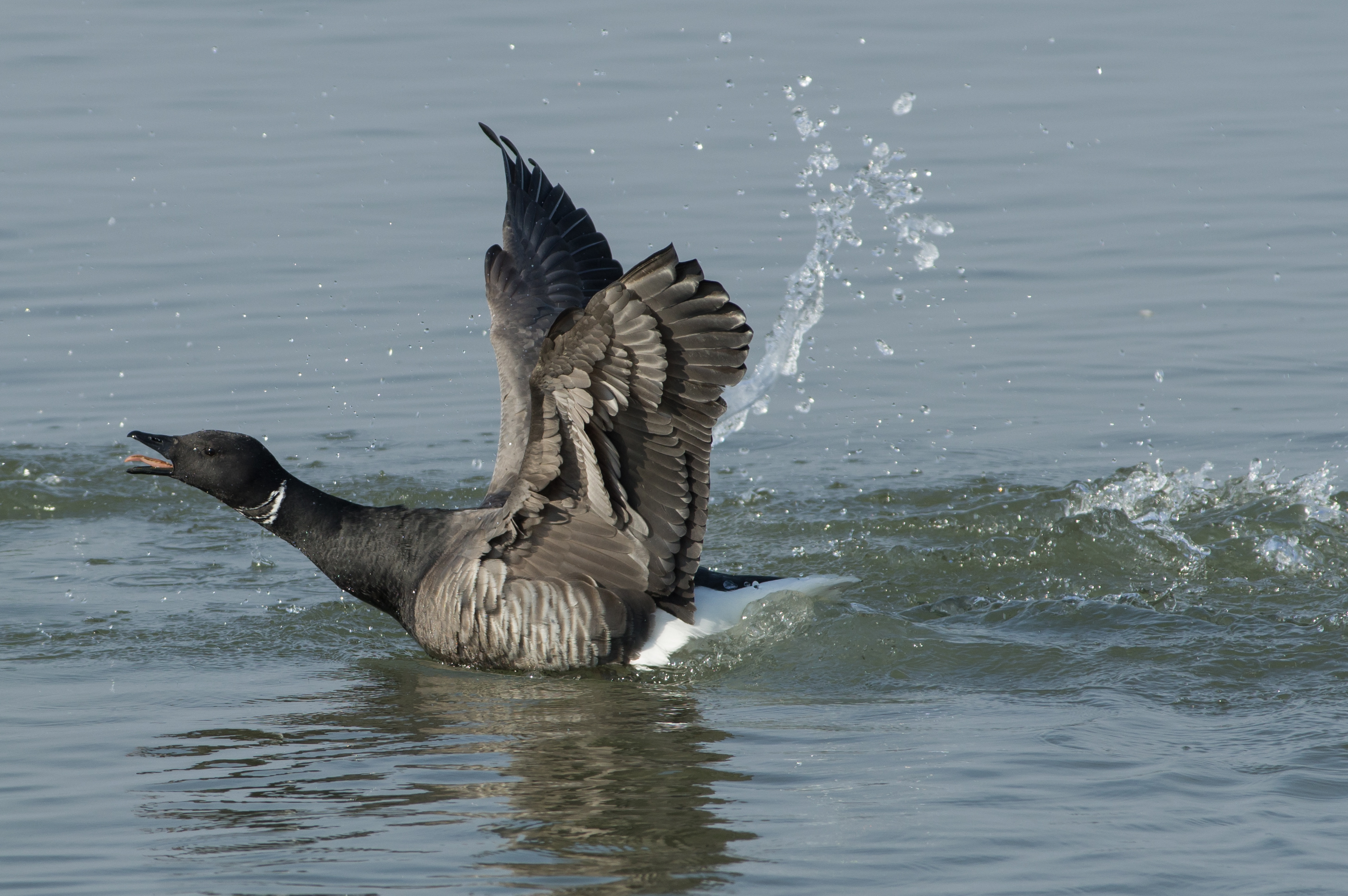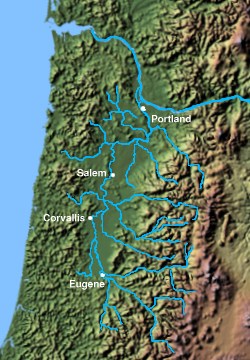|
Small Cackling Goose
The small cackling goose (''Branta hutchinsii minima''), also known as the Ridgway's goose, is the smallest subspecies of cackling goose and the smallest variant of white-cheeked goose. Description ''Ridgway’s geese'' are the smallest of the white cheeked geese and the second smallest goose in the genus Branta, following the red-breasted goose. It is only slightly larger than a mallard and has a culmen (bill) length of 32 mm. The small cackling goose’s calls are described as high pitched yelps. In flight, it can be identified by its fast wingbeat, in contrast to Canada geese and the larger subspecies of cackling geese. Distribution Small cackling geese are known to summer in western Alaska, and winter in the Willamette Valley. It has also been known to occur in California and southern Washington Washington commonly refers to: * Washington (state), United States * Washington, D.C., the capital of the United States ** A metonym for the federal government of the Unit ... [...More Info...] [...Related Items...] OR: [Wikipedia] [Google] [Baidu] |
Robert Ridgway
Robert Ridgway (July 2, 1850 – March 25, 1929) was an American ornithologist specializing in systematics. He was appointed in 1880 by Spencer Fullerton Baird, secretary of the Smithsonian Institution, to be the first full-time curator of birds at the United States National Museum, a title he held until his death. In 1883, he helped found the American Ornithologists' Union, where he served as officer and journal editor. Ridgway was an outstanding descriptive taxonomist, capping his life work with ''The Birds of North and Middle America'' (eight volumes, 1901–1919). In his lifetime, he was unmatched in the number of North American bird species that he described for science. As technical illustrator, Ridgway used his own paintings and outline drawings to complement his writing. He also published two books that systematized color names for describing birds, ''A Nomenclature of Colors for Naturalists'' (1886) and ''Color Standards and Color Nomenclature'' (1912). Ornitholo ... [...More Info...] [...Related Items...] OR: [Wikipedia] [Google] [Baidu] |
Subspecies
In biological classification, subspecies is a rank below species, used for populations that live in different areas and vary in size, shape, or other physical characteristics (morphology), but that can successfully interbreed. Not all species have subspecies, but for those that do there must be at least two. Subspecies is abbreviated subsp. or ssp. and the singular and plural forms are the same ("the subspecies is" or "the subspecies are"). In zoology, under the International Code of Zoological Nomenclature, the subspecies is the only taxonomic rank below that of species that can receive a name. In botany and mycology, under the International Code of Nomenclature for algae, fungi, and plants, other infraspecific ranks, such as variety, may be named. In bacteriology and virology, under standard bacterial nomenclature and virus nomenclature, there are recommendations but not strict requirements for recognizing other important infraspecific ranks. A taxonomist decides whether ... [...More Info...] [...Related Items...] OR: [Wikipedia] [Google] [Baidu] |
Cackling Goose
The cackling goose (''Branta hutchinsii'') is a species of goose found in North America. Description The black head and neck with white "chinstrap" distinguish this goose from all other geese except the larger Canada goose (''Branta canadensis'') and the similarly sized barnacle goose (''B. leucopsis''). There are up to 5 subspecies of cackling goose, of varying sizes and plumage details. The female looks virtually identical but is slightly lighter and has a different voice. Some are hard to distinguish from the Canada goose, with which the cackling goose was long assumed to form one species, the cackling goose and the smaller Canada goose subspecies being called the lesser Canada goose. The smallest Cackling geese (''B. h. minima'') are much smaller than any Canada goose, but the subspecies ''B. h. hutchinsii'', at up to , grows to the same size as some Canada geese. The distinctness of the extinct population of the Komandorski and Kuril Islands ''B. h. asiatica'' is controvers ... [...More Info...] [...Related Items...] OR: [Wikipedia] [Google] [Baidu] |
Branta
The black geese of the genus ''Branta'' are waterfowl belonging to the true geese and swans subfamily Anserinae. They occur in the northern coastal regions of the Palearctic and all over North America, migrating to more southernly coasts in winter, and as resident birds in the Hawaiian Islands. Alone in the Southern Hemisphere, a self-sustaining feral population derived from introduced Canada geese is also found in New Zealand. The black geese derive their vernacular name for the prominent areas of black coloration found in all species. They can be distinguished from all other true geese by their legs and feet, which are black or very dark grey. Furthermore, they have black bills and large areas of black on the head and neck, with white (ochre in one species) markings that can be used to tell apart most species.The nēnē, which is aberrant in many respects, has no white on the head or neck and fairly little black, being quite similar to the swan goose in the color pattern of ... [...More Info...] [...Related Items...] OR: [Wikipedia] [Google] [Baidu] |
Red-breasted Goose
The red-breasted goose (''Branta ruficollis'') is a brightly marked species of goose in the genus ''Branta'' from Eurasia. It is currently classified as vulnerable by the IUCN. Taxonomy and etymology The red-breasted goose is sometimes placed in its own genus ''Rufibrenta'' but appears close enough to the brant goose (''Branta bernicla'') to make this unnecessary, despite its distinct appearance. Today all major authorities include the red-breasted goose in ''Branta''. Genetic studies indicate that the red-breasted goose may be one the few known examples of hybrid speciation in birds, being the result of ancient interbreeding between the ancestral brant goose and white-cheeked goose (the latter being the ancestral species that later split into all today's ''Branta'' species, except the brant and red-breasted geese). This interbreeding appears to have happened at least 3.5 million years ago, with the lineage of the red-breasted goose following its own evolutionary path since th ... [...More Info...] [...Related Items...] OR: [Wikipedia] [Google] [Baidu] |
Mallard
The mallard () or wild duck (''Anas platyrhynchos'') is a dabbling duck that breeds throughout the temperate and subtropical Americas, Eurasia, and North Africa, and has been introduced to New Zealand, Australia, Peru, Brazil, Uruguay, Argentina, Chile, Colombia, the Falkland Islands, and South Africa. This duck belongs to the subfamily Anatinae of the waterfowl family Anatidae. Males have purple patches on their wings, while the females (hens or ducks) have mainly brown-speckled plumage. Both sexes have an area of white-bordered black or iridescent blue feathers called a speculum on their wings; males especially tend to have blue speculum feathers. The mallard is long, of which the body makes up around two-thirds the length. The wingspan is and the bill is long. It is often slightly heavier than most other dabbling ducks, weighing . Mallards live in wetlands, eat water plants and small animals, and are social animals preferring to congregate in groups or flocks of varyi ... [...More Info...] [...Related Items...] OR: [Wikipedia] [Google] [Baidu] |
Culmen (bird)
The beak, bill, or rostrum is an external anatomical structure found mostly in birds, but also in turtles, non-avian dinosaurs and a few mammals. A beak is used for eating, preening, manipulating objects, killing prey, fighting, probing for food, courtship, and feeding young. The terms ''beak'' and ''rostrum'' are also used to refer to a similar mouth part in some ornithischians, pterosaurs, cetaceans, dicynodonts, anuran tadpoles, monotremes (i.e. echidnas and platypuses, which have a beak-like structure), sirens, pufferfish, billfishes and cephalopods. Although beaks vary significantly in size, shape, color and texture, they share a similar underlying structure. Two bony projections – the upper and lower mandibles – are covered with a thin keratinized layer of epidermis known as the rhamphotheca. In most species, two holes called ''nares'' lead to the respiratory system. Etymology Although the word "beak" was, in the past, generally restricted to the sharpened bills o ... [...More Info...] [...Related Items...] OR: [Wikipedia] [Google] [Baidu] |
Bird Vocalization
Bird vocalization includes both bird calls and bird songs. In non-technical use, bird songs are the bird sounds that are melodious to the human ear. In ornithology and birding, songs (relatively complex vocalizations) are distinguished by function from calls (relatively simple vocalizations). Definition The distinction between songs and calls is based upon complexity, length, and context. Songs are longer and more complex and are associated with territory and courtship and mating, while calls tend to serve such functions as alarms or keeping members of a flock in contact. Other authorities such as Howell and Webb (1995) make the distinction based on function, so that short vocalizations, such as those of pigeons, and even non-vocal sounds, such as the drumming of woodpeckers and the "winnowing" of snipes' wings in display flight, are considered songs. Still others require song to have syllabic diversity and temporal regularity akin to the repetitive and transformative patte ... [...More Info...] [...Related Items...] OR: [Wikipedia] [Google] [Baidu] |
Summer
Summer is the hottest of the four temperate seasons, occurring after spring and before autumn. At or centred on the summer solstice, the earliest sunrise and latest sunset occurs, daylight hours are longest and dark hours are shortest, with day length decreasing as the season progresses after the solstice. The date of the beginning of summer varies according to climate, tradition, and culture. When it is summer in the Northern Hemisphere, it is winter in the Southern Hemisphere, and vice versa. Timing From an astronomical view, the equinoxes and solstices would be the middle of the respective seasons, but sometimes astronomical summer is defined as starting at the solstice, the time of maximal insolation, often identified with the 21st day of June or December. By solar reckoning, summer instead starts on May Day and the summer solstice is Midsummer. A variable seasonal lag means that the meteorological centre of the season, which is based on average temperature pattern ... [...More Info...] [...Related Items...] OR: [Wikipedia] [Google] [Baidu] |
Alaska
Alaska ( ; russian: Аляска, Alyaska; ale, Alax̂sxax̂; ; ems, Alas'kaaq; Yup'ik: ''Alaskaq''; tli, Anáaski) is a state located in the Western United States on the northwest extremity of North America. A semi-exclave of the U.S., it borders the Canadian province of British Columbia and the Yukon territory to the east; it also shares a maritime border with the Russian Federation's Chukotka Autonomous Okrug to the west, just across the Bering Strait. To the north are the Chukchi and Beaufort Seas of the Arctic Ocean, while the Pacific Ocean lies to the south and southwest. Alaska is by far the largest U.S. state by area, comprising more total area than the next three largest states (Texas, California, and Montana) combined. It represents the seventh-largest subnational division in the world. It is the third-least populous and the most sparsely populated state, but by far the continent's most populous territory located mostly north of the 60th parallel, with ... [...More Info...] [...Related Items...] OR: [Wikipedia] [Google] [Baidu] |
Winter
Winter is the coldest season of the year in polar and temperate climates. It occurs after autumn and before spring. The tilt of Earth's axis causes seasons; winter occurs when a hemisphere is oriented away from the Sun. Different cultures define different dates as the start of winter, and some use a definition based on weather. When it is winter in the Northern Hemisphere, it is summer in the Southern Hemisphere, and vice versa. In many regions, winter brings snow and freezing temperatures. The moment of winter solstice is when the Sun's elevation with respect to the North or South Pole is at its most negative value; that is, the Sun is at its farthest below the horizon as measured from the pole. The day on which this occurs has the shortest day and the longest night, with day length increasing and night length decreasing as the season progresses after the solstice. The earliest sunset and latest sunrise dates outside the polar regions differ from the date of the winte ... [...More Info...] [...Related Items...] OR: [Wikipedia] [Google] [Baidu] |
Willamette Valley
The Willamette Valley ( ) is a long valley in Oregon, in the Pacific Northwest region of the United States. The Willamette River flows the entire length of the valley and is surrounded by mountains on three sides: the Cascade Range to the east, the Oregon Coast Range to the west, and the Calapooya Mountains to the south. The valley is synonymous with the cultural and political heart of Oregon and is home to approximately 70 percent of its population including the five largest cities in the state: Portland, Eugene, Salem, Gresham, and Hillsboro. The valley's numerous waterways, particularly the Willamette River, are vital to the economy of Oregon, as they continuously deposit highly fertile alluvial soils across its broad, flat plain. A massively productive agricultural area, the valley was widely publicized in the 1820s as a "promised land of flowing milk and honey." Throughout the 19th century, it was the destination of choice for the oxen-drawn wagon trains of emigr ... [...More Info...] [...Related Items...] OR: [Wikipedia] [Google] [Baidu] |




_RWD2.jpg)

.jpg)


